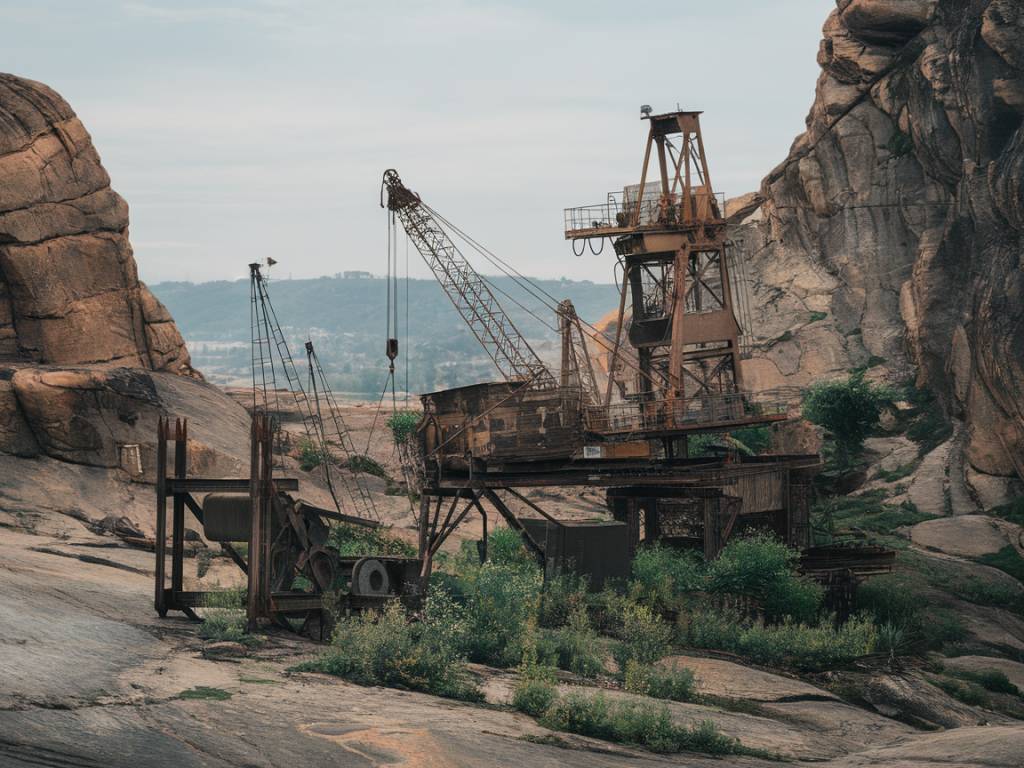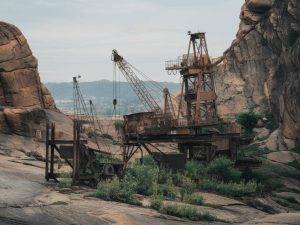The rise and fall of industrial Wales

The rise and fall of industrial Wales
When most people think of Wales, they conjure images of rolling green hills, rugged coastlines, and a distinct cultural heritage. But behind this picturesque façade lies another story—one of coal, iron, and industry. Wales was once the beating industrial heart of the United Kingdom, a land transformed by the rise of heavy industries during the 19th and early 20th centuries. However, as with all great stories, this period was followed by decline, leaving behind a rich yet complex legacy.
The Dawn of Industrial Wales
To understand the industrial revolution in Wales, one must first look to its unparalleled natural resources. The South Wales Valleys were home to some of the richest coal seams in the world, earning the region its title as the « Black Gold » capital of Britain. By the early 19th century, coal wasn’t just a commodity; it was the lifeblood of a nation, fueling steam engines, factories, and the burgeoning railways.
But it wasn’t just coal that propelled Wales forward. The ironworks of Merthyr Tydfil, for example, rose to global prominence during the same period. Once dubbed the “Iron Capital of the World,” Merthyr’s vast foundries forged rails that stretched as far as North America and India. This industrial boom was powered not only by resources but also by ambition, innovation, and a workforce that swelled with migrants from rural Wales, England, Ireland, and beyond.
A Society Transformed
The rise of industrial Wales wasn’t just an economic revolution; it was a social one. Entire towns sprang into existence around coal mines and ironworks. Merthyr Tydfil grew to become Wales’ largest town by 1850, its population soaring along with industrial production. The port town of Cardiff, once a modest settlement, blossomed into the world’s busiest coal-exporting port by the late 19th century.
However, industrial life wasn’t all prosperity and growth. The working conditions in mines and foundries were notoriously harsh. Accidents and lung diseases were rampant, and families often lived in cramped, unsanitary housing near their places of work. Despite these hardships, vibrant communities emerged, rooted in solidarity and resilience. These communities gave birth to chapels, workers’ unions, and a unique working-class culture that still echoes today.
The Golden Age and Its Ripple Effects
During the 19th century, Welsh coal was a prized export. It powered British factories, navy ships, and homes while being shipped across the globe. The wealth generated by this industry was monumental. Cardiff’s prosperity was perhaps best encapsulated by the construction of opulent landmarks like the Pierhead Building and the Coal Exchange, symbols of a city at the peak of its power.
This period also saw the expansion of railways, connecting the mines of the Valleys to ports like Newport, Swansea, and Cardiff. The transport network wasn’t just a logistical marvel—it symbolized how industrial Wales had become integral to global trade. For every ton of coal exported, Wales cemented its position as an industrial superpower.
The Slow Decline of Industrial Wales
Yet, all empires, industrial or otherwise, eventually face decline. By the early 20th century, cracks began to appear in the foundations of Wales’ industrial might. The global demand for Welsh coal started to wane with the rise of alternative energy sources and competition from other countries. Add to this the impact of two world wars, economic depressions, and shifts in political landscapes, and the decline became inevitable.
By the 1980s, coal mines and steelworks that had once been the backbone of Welsh industry were closing their doors. Communities faced economic devastation, and unemployment skyrocketed. The once-thriving towns became symbols of industrial decline, their histories scarred by social and economic upheaval.
A Legacy in Steel and Stone
But the story doesn’t end with decline. The industrial age left an indelible mark on the Welsh landscape, culture, and identity. Landmarks like Big Pit National Coal Museum in Blaenavon and the ironworks of Merthyr Tydfil have been preserved, offering visitors today a glimpse into the lives of those who built industrial Wales.
More than relics of the past, these sites are sources of pride and remembrance. They remind us of the ingenuity and resilience of the Welsh people—traits that carried them through the rise, dominance, and eventual decline of industrial Wales. And while heavy industry no longer defines Wales, its echoes remain in the nation’s spirit, poetry, and even in its cuisine. Welsh cakes cooked on cast-iron griddles, after all, have more in common with their industrial roots than one might think!
Rediscovering Industrial Heritage
Today, industrial Wales provides a rich tapestry for both locals and visitors to explore. Whether walking through the eerie yet striking ruins of Blaenau Ffestiniog’s slate mines or trudging the historic tramroads of the Valleys, there’s a story waiting to be uncovered. And let’s not forget the people who lived these stories—miners’ songs, folklore, and even recipes passed down through generations continue to be celebrated in Welsh culture.
There’s also a lesson in resilience and renewal to take away. As Wales looks toward the future, its past serves as both a guidepost and a testament to the unyielding human spirit. So, next time you visit Wales and gaze upon its rolling green hills, take a moment to imagine the soot-covered landscapes of its industrial peak. After all, the story of industrial Wales isn’t just history—it’s a vital thread in the nation’s fabric.





